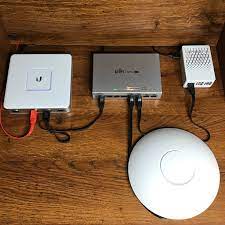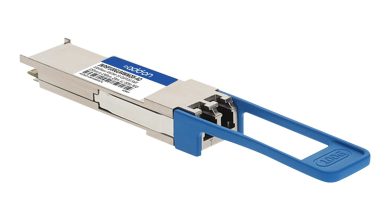Maximising Your Home Network: A Comprehensive Guide to Ubiquiti Routers

Ubiquiti Networks is a leading manufacturer of networking equipment, best known for its high-performance routers and access points. In this guest blog post, we will provide a comprehensive guide to Ubiquiti routers, helping you understand their features and benefits, and how to choose the right one for your home network. Read on to discover how these powerful devices can improve your home connectivity and overall internet experience.
Ubiquiti Routers: An Overview
Ubiquiti routers are designed to provide reliable, high-speed internet connectivity with minimal latency. They are built with enterprise-grade hardware and utilize advanced routing technologies, making them suitable for both home and small business networks. Some of the key features of Ubiquiti routers include:
- High-performance processors: Ubiquiti routers come equipped with powerful processors that can handle multiple simultaneous connections without sacrificing speed or stability.
- Advanced routing protocols: These routers support various routing protocols, including OSPF, BGP, and MPLS, allowing for more efficient and flexible network management.
- Centralised management: Ubiquiti routers can be managed through the UniFi Controller software, which provides a user-friendly interface for monitoring and configuring network settings.
- Security features: Ubiquiti routers come with built-in firewalls and support VPNs, ensuring your network remains secure and private.
Choosing the Right Ubiquiti Router for Your Home
To select the perfect Ubiquiti router for your home network, consider the following factors:
- Network size: Determine the size of your network based on the number of devices you plan to connect and the coverage area required. Smaller networks may benefit from a single router, while larger homes may require multiple routers or additional access points for optimal coverage.
- Internet speed: Assess your current and future internet speed requirements. Choose a router that can handle your desired internet speeds without bottlenecking your connection.
- Connectivity options: Consider the types of devices you plan to connect to your network, such as wired and wireless devices, and ensure the router you choose has enough ports and supports the necessary wireless standards.
- Budget: Ubiquiti offers routers at various price points, so consider your budget when making your decision. While higher-end models may provide more features and better performance, more affordable options can still deliver excellent results for many users.
Popular Ubiquiti Router Models
Here are some popular Ubiquiti router models that cater to different networking needs:
- Ubiquiti EdgeRouter X (ER-X): The EdgeRouter X is an affordable, compact, and powerful router suitable for small networks. It features a 5-port Gigabit Ethernet switch, supports passive PoE, and provides advanced routing features such as VLANs and QoS.
- Ubiquiti EdgeRouter 4 (ER-4): The EdgeRouter 4 is a mid-range router with a 4-core processor, three Gigabit Ethernet ports, and an SFP port for fibre connectivity. It supports advanced routing protocols and can handle up to 3.4 million packets per second, making it suitable for networks with high-speed internet connections.
- Ubiquiti UniFi Security Gateway (USG): The UniFi Security Gateway is a router and firewall designed for seamless integration with other UniFi devices. It offers advanced security features, such as DPI and IPS, and can be managed through the UniFi Controller software for centralised network management.
Setting Up and Optimising Your Ubiquiti Router
Once you’ve chosen the right Ubiquiti router for your home network, follow these steps to set up and optimise your device:
Connect your router: Place your router in a central location to ensure optimal coverage. Connect your modem to the WAN port of the router using an ethernet cable, and connect your devices to the LAN ports or via Wi-Fi.
Configure your router: Access the router’s configuration interface through a web browser, using the default IP address provided in the user manual. Set up your internet connection settings, Wi-Fi network name (SSID), and password. Make sure to enable WPA3 security for enhanced protection.
Update firmware: Check for and install any available firmware updates to ensure your router is running the latest software, which can include security patches and performance improvements.
Optimise Wi-Fi settings: Adjust the Wi-Fi channel and bandwidth settings to minimise interference from other nearby networks. Enable features such as band steering and airtime fairness to ensure a balanced distribution of network resources among connected devices.
Set up Quality of Service (QoS): Configure QoS settings to prioritise specific types of network traffic, such as online gaming or video streaming, ensuring a smooth experience even during periods of high network usage.
Secure your network: Enable the router’s built-in firewall and, if available, intrusion prevention system (IPS) to protect your network from external threats. Set up a Virtual Private Network (VPN) to encrypt your internet connection and maintain privacy.
Monitor and manage your network: Use the UniFi Controller software or the router’s management interface to monitor network performance, identify and resolve connectivity issues, and update settings as needed.
Conclusion
Ubiquiti routers offer a reliable, high-performance solution for home networks, with advanced features and robust security measures that cater to various networking needs. By carefully selecting the right Ubiquiti router for your home and optimising its settings, you can enjoy a seamless, secure, and efficient internet experience. With centralised management and regular monitoring, you can ensure your network remains in top shape, delivering outstanding connectivity for all your devices.





